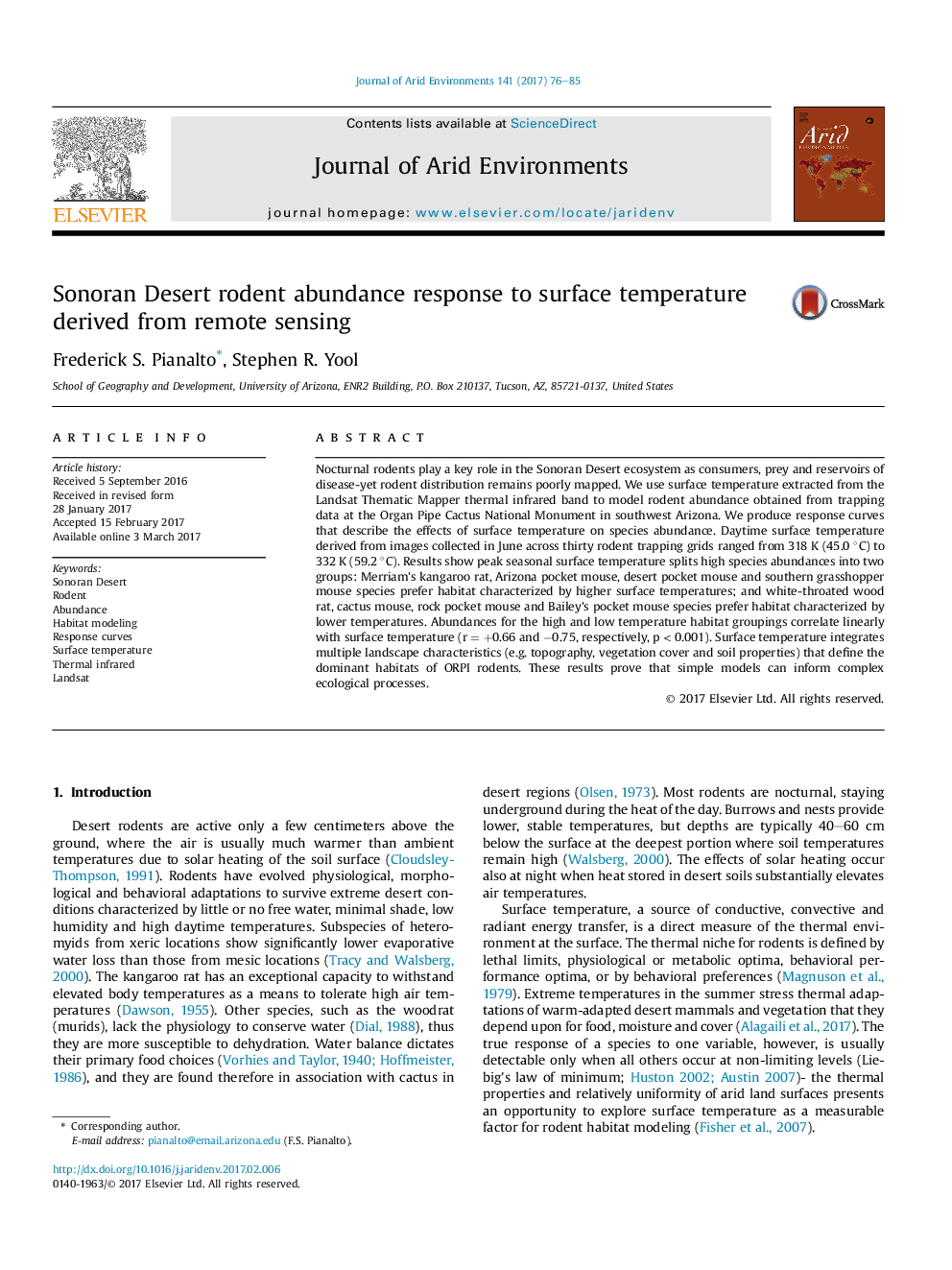| Article ID | Journal | Published Year | Pages | File Type |
|---|---|---|---|---|
| 5744309 | Journal of Arid Environments | 2017 | 10 Pages |
â¢We extract surface temperature from the Landsat Thematic Mapper thermal infrared band.â¢We produce response curves between Sonoran Desert rodent abundance and surface temperature.â¢Individual species abundances correlate significantly in nonlinear models.â¢Species groupings exhibit opposite correlation and depict a dual-natured habitat regime.â¢Surface temperature at 120 m resolution is an integrator of solar microclimates.
Nocturnal rodents play a key role in the Sonoran Desert ecosystem as consumers, prey and reservoirs of disease-yet rodent distribution remains poorly mapped. We use surface temperature extracted from the Landsat Thematic Mapper thermal infrared band to model rodent abundance obtained from trapping data at the Organ Pipe Cactus National Monument in southwest Arizona. We produce response curves that describe the effects of surface temperature on species abundance. Daytime surface temperature derived from images collected in June across thirty rodent trapping grids ranged from 318 K (45.0 °C) to 332 K (59.2 °C). Results show peak seasonal surface temperature splits high species abundances into two groups: Merriam's kangaroo rat, Arizona pocket mouse, desert pocket mouse and southern grasshopper mouse species prefer habitat characterized by higher surface temperatures; and white-throated wood rat, cactus mouse, rock pocket mouse and Bailey's pocket mouse species prefer habitat characterized by lower temperatures. Abundances for the high and low temperature habitat groupings correlate linearly with surface temperature (r = +0.66 and â0.75, respectively, p < 0.001). Surface temperature integrates multiple landscape characteristics (e.g. topography, vegetation cover and soil properties) that define the dominant habitats of ORPI rodents. These results prove that simple models can inform complex ecological processes.
